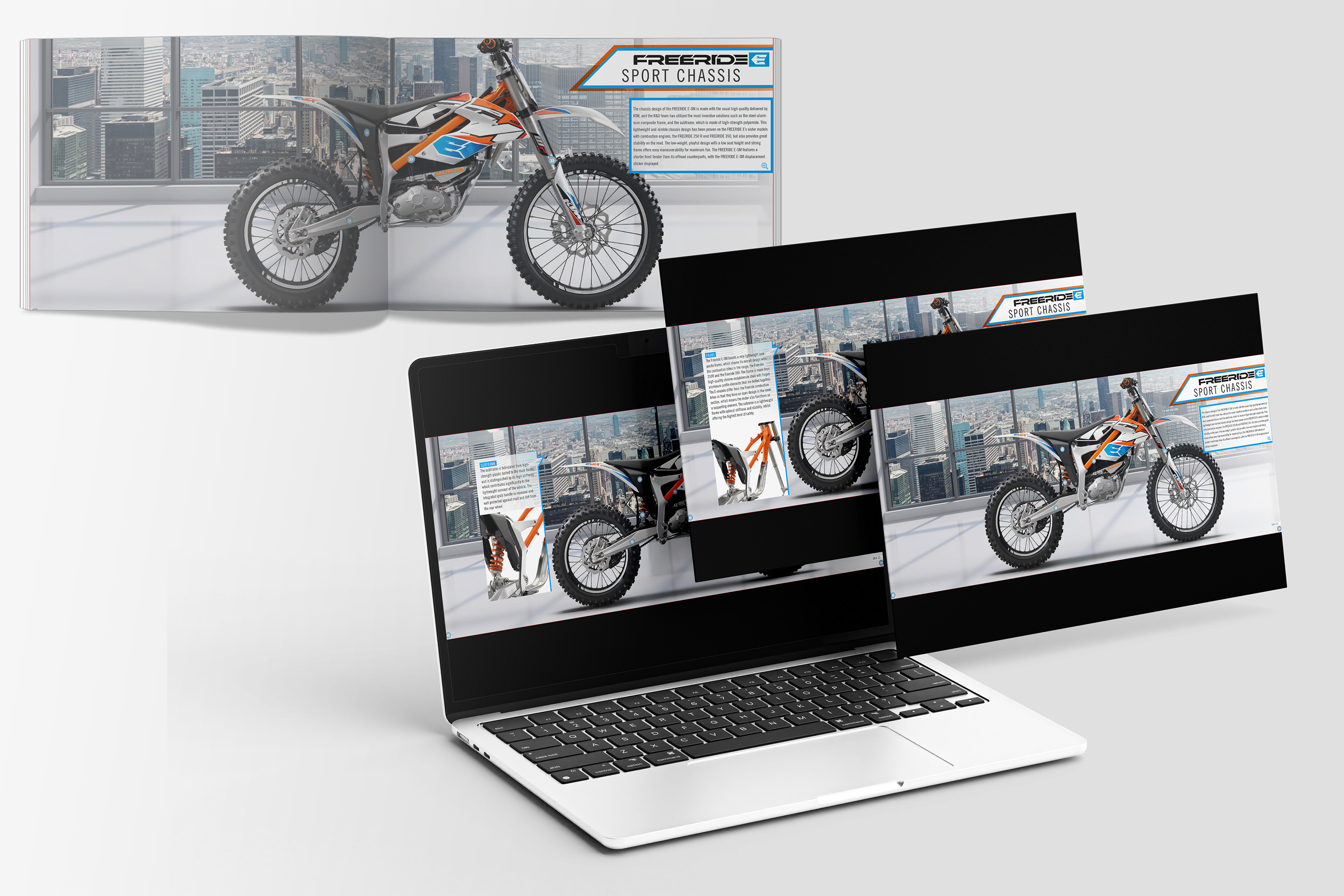Editorial Design in Transition: How Print and Digital Converge
Why great storytelling needs both formats

Why great storytelling needs both formats
For years, people have declared the death of print. But instead of vanishing, it has transformed. Today, print is more intentional, tactile, and emotional. Especially in editorial design, print still plays a crucial role, because it complements digital, rather than competes with it.
In our design studio, we regularly experience how analog charm and digital versatility can work together beautifully. In this post, you’ll learn how to bridge both worlds and create editorial designs that resonate across formats.
Print is physical. You can hold it, keep it, even smell it.
Print builds emotional connection, adds value, and creates trust.
Particularly powerful in:
customer magazines
brand brochures
premium editorial projects
limited print editions with strong storytelling
Digital content is fast, flexible, and accessible everywhere.
Digital editorial design can include interactivity, animation, live updates, and extended content like videos or social integrations.
Best suited for:
digital magazines
interactive PDFs
website or app-based articles
content for social media or newsletters
Modern editorial design embraces both – the depth and richness of print and the speed and scope of digital.
Print becomes more intentional
Less mass production, more experience. Print is a curated moment.
Digital extends the story
It adds motion, sound, and interaction to enrich the content.
Design must work across platforms
Editorial systems need to function both in static layouts and dynamic screens.
Know your audience: Where and how do they consume content?
Choose the right medium for each message
Adjust your design principles: Think spacing, typography, readability
Build modular content: So it can adapt fluidly to different platforms
Create synergy: Let print lead to digital, and vice versa
Great editorial design today isn’t about choosing sides. It’s about using the strengths of each format strategically.
Because when tactile print meets dynamic digital, stories become more immersive, more memorable, and more effective.
We’d love to help you find the perfect mix between print and digital.
Let’s talk – we’re ready when you are.